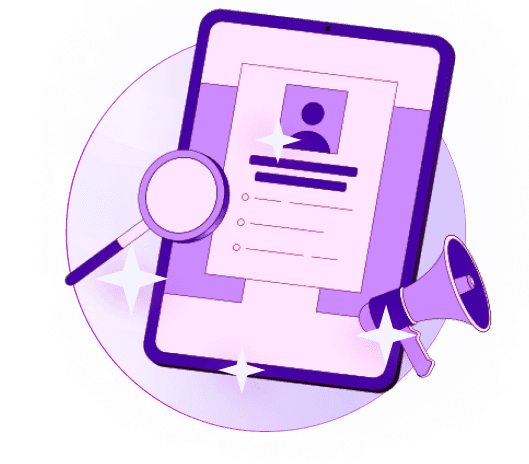Blogs
Articles

What is a Sales Pitch? Examples & Elements
A successful sales pitch hinges on a captivating introduction that not only grabs the prospect's attention but also leaves a lasting impression. This opening should be personalized, engaging, and tailored to resonate with the specific needs or pain points of the prospect. By establishing a connection from the outset, you lay a solid foundation for the rest of your pitch.
What is in a sales pitch?
A sales pitch is a concise and persuasive message designed to capture attention and convince a potential customer to take action. It typically starts with a strong hook to draw interest, followed by a clear statement of the problem the customer is facing. The pitch then presents the product or service as the ideal solution, emphasizing its unique value and benefits.
To build trust, it often includes proof points such as testimonials, case studies, or data. Finally, it ends with a compelling call to action that guides the listener toward the next step, whether it's booking a demo, making a purchase, or setting up a meeting.
What are the 4 P's of sales pitch?
Product Knowledge: The Foundation of Success
Mastering the details of the product or service you are offering is the cornerstone of any successful sales pitch. A comprehensive understanding of the features, benefits, and unique selling points empowers you to address potential client inquiries with confidence and authority. Product knowledge not only instills trust in your audience but also enables you to effectively convey the value proposition of what you are selling.
Preparation: Setting the Stage for Success
Effective sales pitches are not improvised; they are meticulously planned and tailored to suit the needs of your audience. Prior to delivering your pitch, conducting thorough research on your prospective clients, their businesses, pain points, and objectives is crucial. By customizing your presentation to align with their specific requirements, you demonstrate attentiveness and a genuine interest in their success.
Personalization: Building Connections That Last
Tailoring your sales pitch to resonate with each individual client is a powerful strategy for establishing meaningful connections and fostering long-term relationships. By demonstrating a keen understanding of your client's challenges and aspirations, you showcase your commitment to providing tailored solutions that address their unique needs. Personalization goes beyond addressing a client by name; it involves adapting your pitch to reflect their industry, concerns, and objectives.
Practice: Refining Your Art
Just as a musician hones their skills through consistent practice, mastering the art of delivering a compelling sales pitch requires dedication and refinement. Rehearsing your pitch, seeking feedback from peers or mentors, and continuously refining your approach based on experience are essential steps in enhancing your presentation skills. By embracing a mindset of continuous improvement, you can refine your pitch to be more persuasive, impactful, and engaging over time.
Essential Elements of a Sales Pitch
Value Proposition
One of the core components of a compelling sales pitch is a strong value proposition. Clearly articulate the unique benefits and advantages that your product or service offers. Highlight how it addresses the prospect's challenges, enhances their life, or improves their business operations. By showcasing the value proposition early on, you demonstrate the relevance and importance of what you are offering.
Handling Objections
In any sales interaction, objections are bound to arise. Effective salespeople anticipate these objections and view them as opportunities to further educate the prospect. When addressing objections, aim to empathize with the prospect's concerns and provide well-thought-out responses that alleviate their doubts. By acknowledging objections proactively and offering viable solutions, you build credibility and trust with the prospect.
Call to Action
A compelling call to action serves as the culmination of your sales pitch, guiding the prospect towards a decision. Clearly outline the specific actions you want the prospect to take, whether it's scheduling a follow-up meeting, signing up for a trial, or making a purchase. By providing a clear and concise call to action, you eliminate ambiguity and motivate the prospect to move forward. Remember, a strong call to action should create a sense of urgency and emphasize the benefits of acting promptly.
Conclusion
Mastering the art of delivering an effective sales pitch is essential for any salesperson looking to succeed in today's competitive market. By understanding the needs of the customer, tailoring the pitch to address those needs, and presenting the value proposition clearly and convincingly, sales professionals can significantly increase their chances of closing deals and building strong customer relationships.
Ready to see how Persana.ai can supercharge your sales outreach? Book your free demo today and experience the power of AI-driven personalization!
FAQ
What are the 4 essential elements of a sales pitch?
Ans: Here are the 4 essential elements of the sales pitch
Attention
Interest
Desire
Action
Why is it called sales pitch?
Ans: It's called a sales pitch because you're "pitching" or presenting an idea to persuade someone to buy a product or service, similar to throwing a pitch in baseball—quick, targeted, and aimed to get a response.

Create Your Free Persana Account Today
Join 5000+ GTM leaders who are using Persana for their outbound needs.
How Persana increases your sales results
One of the most effective ways to ensure sales cycle consistency is by using AI-driven automation. A solution like Persana, and its AI SDR - Nia, helps you streamline significant parts of your sales process, including prospecting, outreach personalization, and follow-up.



